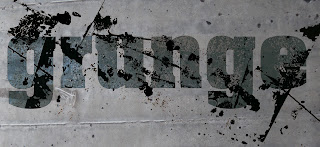this is one of my first attempts at 2 point perspective drawing.
About Me

- Penny
- My name is Penelope McDonald. I am currently studying Graphic Design. I aspire to be a Graphic Designer and Illustrator. Like me on facebook: facebook.com/perceived.graphics Thanks for reading =)
6/15/2011
6/08/2011
Blue!
So in colour psychology class, I did a group presentation on the colour blue.
heres the food i presented to the class. blue white chocolate crackle and blue bread.
It was fascinating to find out that people were fine with blue sugary food but many didn't want to try the bread. This is because sugar foods are so artificial that we are used to the random colours but when it comes to savoury food we expect it to be fresh and normal coloured.

4/20/2011
4/10/2011
more photoshoping
First day of a two week holiday from TAFE & I'm already bored.
so here is a photo of myself which i photoshoped for the fun of it =)
hope you like it =)
so here is a photo of myself which i photoshoped for the fun of it =)
hope you like it =)
4/02/2011
3/04/2011
Typography - Grungy
Never really thought so much about fonts before. This year i will be designing two of my own typefaces once i learn how to at TAFE. Here are some interesting techniques i learned in class today:
These were made using a printer, masking tape, sand paper & ink splatters.
These were made with photoshop (using a layer mask)
Typeface was made with illustrator, background made with photoshop.
3/01/2011
Photography lesson: Exposure
Ever taken a photo and wondered why the photograph turned out too dark or too light? Many people are completely unaware of the settings on their camera and keep everything set to auto when the quality of the photo could be better if they changed just two things. Here's what i learned at tafe about it.
Shutter speed is the length of time in which the lens of a camera is open for while a photo is taken. It co – insides with the aperture which is how wide the lens is open for the shot. One cannot be changed without the other being changed or the photo will be either over or under exposed (too light or dark) loosing detail in the photo.
If the shutter speed is set to a slow speed, (such as 1/4 ) the lens will be open for a longer period of time letting more light into the picture so to avoid it being over exposed (too bright) the aperture needs to be a high number (such as f/16) so that the width of the lens is narrow and should balance out the amount of light getting into the photo. This type of setting is usually good for night time or indoor scenery (generally dark scenery).
If the shutter speed is set to fast, (such as 1/15000) then the camera lens will be open for a very brief period of time and will let very little light in. In order to balance this the aperture needs to be wide/low such as (f/2.7). This type of setting is suited to bright outdoor scenery.
In conclusion:
Reference:
http://silverstrandphoto.wordpress.com/2010/06/29/tuesday%E2%80%99s-tips-tricks-shutter-aperture-together/
http://petphotography.wordpress.com/2007/04/26/shutter-aperture/
Shutter speed is the length of time in which the lens of a camera is open for while a photo is taken. It co – insides with the aperture which is how wide the lens is open for the shot. One cannot be changed without the other being changed or the photo will be either over or under exposed (too light or dark) loosing detail in the photo.
If the shutter speed is set to a slow speed, (such as 1/4 ) the lens will be open for a longer period of time letting more light into the picture so to avoid it being over exposed (too bright) the aperture needs to be a high number (such as f/16) so that the width of the lens is narrow and should balance out the amount of light getting into the photo. This type of setting is usually good for night time or indoor scenery (generally dark scenery).
If the shutter speed is set to fast, (such as 1/15000) then the camera lens will be open for a very brief period of time and will let very little light in. In order to balance this the aperture needs to be wide/low such as (f/2.7). This type of setting is suited to bright outdoor scenery.
In conclusion:
- · for dark scenery - the slower the shutter the higher the aperture number (best taken with a tripod to avoid shaky hands)
- · for bright scenery – the faster the shutter and the lower the aperture number
Reference:
http://silverstrandphoto.wordpress.com/2010/06/29/tuesday%E2%80%99s-tips-tricks-shutter-aperture-together/
http://petphotography.wordpress.com/2007/04/26/shutter-aperture/
Subscribe to:
Comments (Atom)















